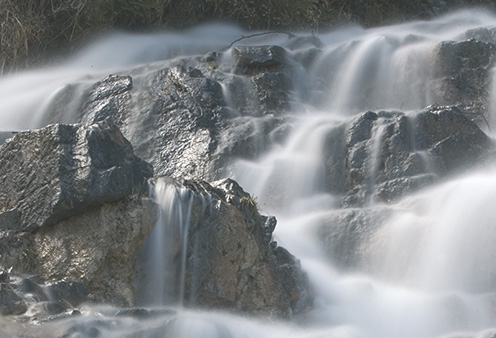Neutral Density filters are important tools for controlling light reduction. They permit less depth of field under bright lighting since the aperture has to be larger and, in addition, they permit long time exposures with stronger ND filters in sunlight. With digital imaging over exposure can be avoided resulting in natural color reproduction. ND grey filters are manufactured from color neutral Schott glass so they can be used for color imaging. They are available in 3 densities. Higher densities are available on special order for technical and scientific applications. On most digicams the imaging sensor is smaller than the 35mm format. This results in a relatively large depth of field, even with a large aperture opening this can be disturbing – when eg. A portrait has to be separated from the background and the available light requires the use of a smaller aperture, reducing the available light allows the choice of the best aperture. Also with digicams that only operate in full auto mode, the depth of field can be reduced. Digicams frequently have fewer apertures then film cameras, (eg. 2.8 to 5.6 or 2.0 to 8.0) a neutral density filter allows a much larger choice of exposure combinations.
Creative Tip:
For evening and night exposures, totally close the aperture, use a strong ND filter and use a tripod. Long time exposure, will result in moving objects disappearing and a surreal effect.
| Density | Light Loss | Filter Factor | Exposure Correction |
| ND 0,3 | 50,00% | 2x | -1 |
| ND 0,6 | 25,00% | 4x | -2 |
| ND 0,9 | 12,50% | 8x | -3 |
| ND 1,2 | 6,25% | 16x | -4 |
| ND 1,5 | 3,12% | 32x | -5 |
| ND 1,8 | 1,56% | 64x | -6 |
| ND 2,0 | 1,00% | 100x | -6,66 |
| ND 3,0 | 0,10% | 1000x | -10 |
Example

Picture taken with Heliopan neutral density filter
-
HELIOPAN – grau hell, BLF 2x, LW -1, ND 0,3
2030Helles Graufilter: Es hat nur leichte Lichtdämpfung

















